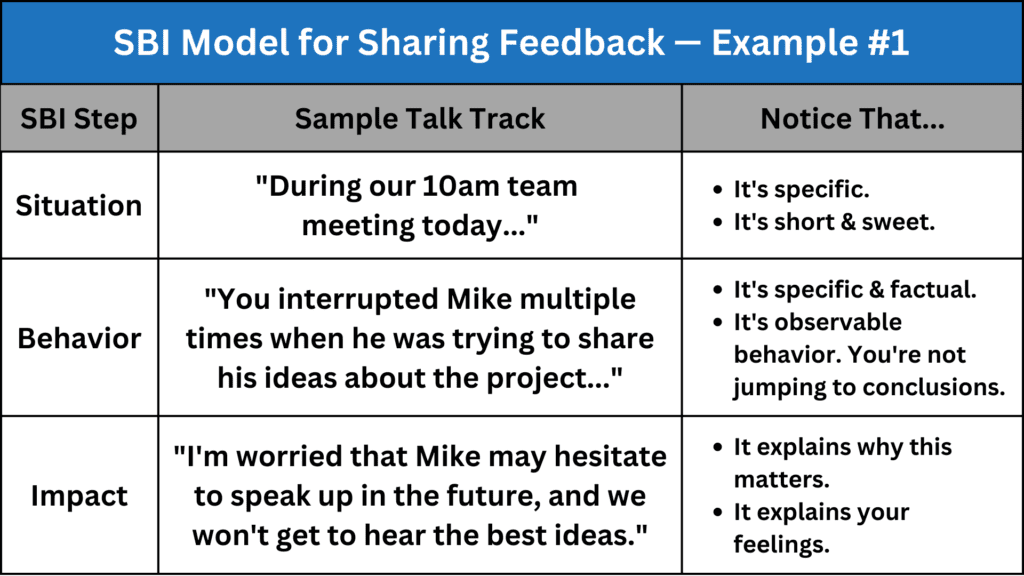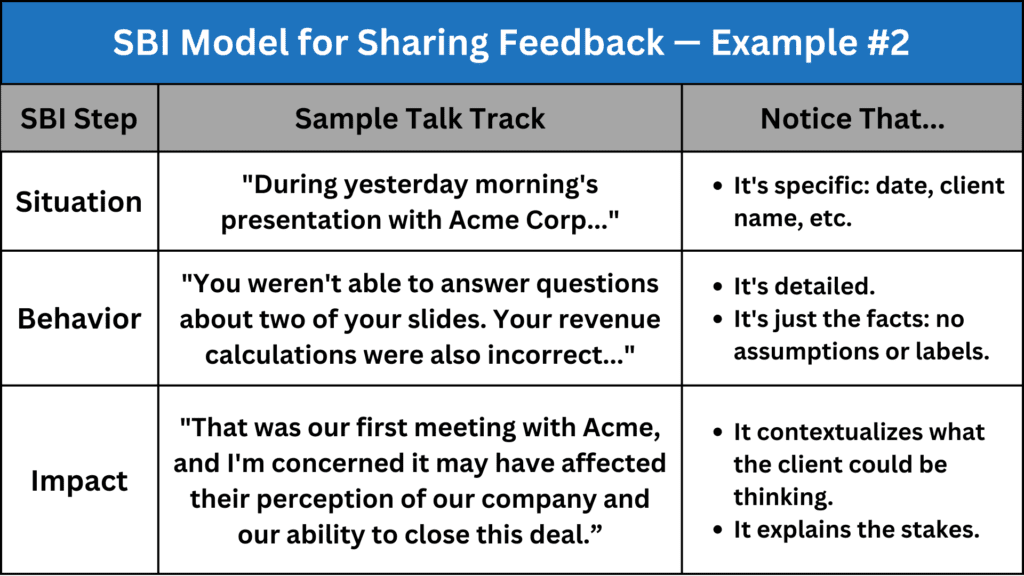Struggling to Give Feedback? Try This 3-Step Formula.
I frequently get calls from friends who want to chat about work challenges. And I’m perpetually amazed by how often my friends’ struggles come back to one thing: a hesitancy to share feedback.
One entrepreneur I know (“Greg”) was having issues with his business partner. I asked Greg how his partner responded when Greg expressed those concerns. But Greg hadn’t said anything, so the problem persisted.
Another friend felt he was being micromanaged, so he was thinking about jumping ship to another company. I asked how his manager responded when he shared he was feeling that way. He hadn’t said anything yet. He was just quietly filling out job applications.
Now, let me just say…I get it. Feedback is tough. Only psychopaths enjoy giving someone a difficult message that could ruin their day.
But the problem is that many people seemingly prefer to wallow in misery rather than have an honest, candid conversation with someone. And that tendency to avoid tough conversations often leads people to unnecessarily hate their jobs, leave jobs prematurely, or blow up at loved ones when work stress bubbles over.
The solution isn’t to avoid tough feedback conversations — it’s to get better at having them.
In my job, I get to nerd out on this stuff. For five years, I’ve run employee experience and learning & development (L&D) for various companies, and I love studying how people tick — reading about leadership and psychology, chatting about company culture, etc.
And from everything I’ve read, heard, and personally experienced, the best model for delivering feedback is something called the SBI Model, developed by the Center for Creative Leadership.
It’s simple, it’s easy to remember, and it’s effective. Here’s a quick breakdown of how to share feedback using the SBI Model:
- Situation: What was the context or timing? When did this happen?
- Behavior: What did the person do or say?
- Impact: How did their behavior impact others (e.g., their colleagues, the company, clients)?
Before we dive into exactly what feedback sounds like using the SBI Model, let’s recap a few of the biggest mistakes people often make when sharing tough messages:
- Not saying anything: Honestly, this is the biggest one. Giving feedback takes courage.
- Not being specific enough: “Your performance has been low,” “You haven’t closed many cases,” “You’re below quota,” etc.
- Jumping to conclusions: “You’re not trying hard enough,” “You don’t seem to care enough about this,” etc.
- Assigning labels: “You’re lazy,” “You’re a terrible teammate,” etc.
- Sugarcoating the message: “You missed quota this month, but I still think you’re doing well.”
- Sandwiching the tough message between two positive messages: “You exhibited great energy on that call. I think you could have done a better job with the product demo, but you ended the call well by recapping the next steps.”
Using the SBI model can help you avoid many of these mistakes. It keeps you focused on what matters most in the message you need to deliver.
Let’s look at two example situations and run them through the SBI model.
What SBI Looks Like in Practice
Example #1 — Your direct report Tom interrupted a new hire multiple times during a recent team meeting
In a situation like this, there are a few potential traps you need to avoid:
- The first trap is to mentally justify what Tom did (thinking it wasn’t really that bad) and not say anything. This is the worst trap because it completely lets Tom off the hook, meaning he’ll probably do it again.
- Another trap some managers fall into is blasting out their message to the entire team rather than just telling Tom. For example, some people would rather take the easy way out by starting the next team meeting with a reminder that no one should interrupt each other. This strategy fails in two key ways. First, it doesn’t hold Tom accountable. And second, it also could cause others in the group to think they’re the problem when they haven’t done anything wrong.
- Not being specific enough with the feedback you need to share.
Here’s what talking to Tom would sound like using the SBI model:

Example #2 — Your colleague Mary conducted a prospect call poorly
Here are a few potential traps you need to avoid in this situation:
- Giving generalized feedback like “That didn’t go well” or “I wish you had prepared for the call better”
- Jumping to advice too quickly (what Mary should do in the future) rather than explaining what exactly went poorly
- Not contextualizing why the little things are so important (i.e., getting the small stuff wrong can make prospects think you’ll also get the big stuff wrong)

As you can see from the two examples above, these feedback conversations don’t need to take long. Theoretically, sharing feedback with the SBI model should only take a minute or two.
When delivering feedback, most people tend to talk too much, and the more you say, the more likely you are to sugarcoat the message or use unnecessary “hedging” language that lets the other person off the hook.
Don’t do that. Just state your piece, then shut up. Deliver the message succinctly and candidly using the SBI model: Situation, Behavior, Impact.
Explain what you observed and why it’s important. Then ask the person if what you said resonates with them.
Give the SBI model a shot and you’ll notice an immediate improvement in your tough conversations.




